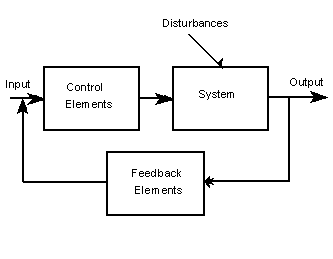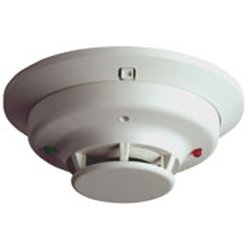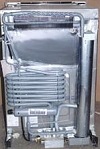Control
By M Brooke
Centralized control systems
Key Terms
- Control systems
- Microprocessor
- Sensor
- Input devices
- Processor
- Output transducer
- Feedback
A computer control system is like many other systems and is made up of three parts:
7.1.1 Discuss a range of control systems.
Centralised control systems use a computer/processor/microchip to control the movement of an object. Control systems exist in all areas of life such as:
Automatic doors, heating systems, taxi meters, elevators, washing machines, process control, device drivers, domestic robots, GPS systems, traffic lights,
7.1.2 Outline the uses of microprocessors and sensor input in control systems.
The role of microprocessors in control
The role of computers in control have several advantages and disadvantages.
Pros | Cons |
|
|
The role of sensors in control
Sensors are used to measure physical quantities such as temperature, light, pressure, sound, and humidity. They send signals to the processor. For example:
- A security alarm system may have an infrared sensor which sends a signal when the beam is broken.
- A heat sensitive sensor in the corner of a room may detect the presence of a person.
- Temperature sensors could be used to control the heating in a large building.
- Magnetic sensors are used to detect metal and can be placed in roads to monitor traffic flow.
Other physical quantities that can be transmitted directly to the computer's processor include:
- rainfall/water levels
- radiation level
- pH level
- oxygen level
Analogue to digital conversion
Data such as pressure, light and temperature is analogue data. Analogue data is continuously changing data. Computers can only work with digital data. In order to convert analogue to digital data discrete points on the analog signal must be sampled. The more samples you take the more accurate the digital representation. This is known as a sample rate.
An example of sample rates is 44100Hz sample rate that sound engineers use to digitise analogue sound. This means there are 44100 samples every second. At this rate the digitised sound is indistinguishable from the original when played back. The example below show discreet samples on a basic sound wave.
Note the sample take place over equal amounts of time and the corresponding sample allows the signal to be digitised. If we decreased the time intervals then the digitised signal would more closely approximate the original signal. The more samples you take per second means a better quality digitised signal but requires a lot more storage.
An interface box or analogue to digital converter (ADC) is needed to convert the analogue data from the sensors into digital data the computer can process.
The picture below show the analogue to digital unit (ADC) which converts the analogue data from sensors to digital data which is then transmitted through a USB cable to the computer.
Once the data is in the computer it is easier to analyse and represent using graphs. [2]
7.1.3 Evaluate different input devices for the collection of data in specified situations.
SENSOR | MEASURES | USES | IMAGE |
Heat | Temperature | Central heating systems | |
Humidity | Water vapour in the air | Greenhouse, swimming pools | |
Infra-red | Radiation | Security alarm systems | |
Light | Light levels | Security lights. | |
PH | Acid/Alkali levels | Environmental monitoring. | |
Pressure | Pressue | Automatic doors, alarm systems | |
Smoke | Levels of smoke in air | Fire alarm systems. | |
Sound | Sound level | Alarm systems, voice controlled electronics, noise pollution monitoring | |
Tilt | Angle of tilt | windows in alarm systems, aircraft | |
Touch | Detects contact | Robots |
7.1.4 Explain the relationship between a sensor, the processor and an output transducer.
A control system typically comprises of a computer or microprocessor, a control program which handles data from sensors and sends signals to output devices and an interface box to convert signals between the sensors and the processor.
The output devices tend to be actuators which can control real world events.
Some examples of actuators are shown below:
ACTUATOR | WHAT IT CAN DO | PICTURE |
Light bulb or LED | Creates light | |
Heater | Increases temperature | |
Cooling Unit | Decreases temperature | |
Motor | Spins things around | |
Pump | Pushes water / air through pipes | |
Buzzer / Bell / Siren | Creates noise |
There are two types of control system:
- Open loop system
- Feedback system
The first type will only look at the input signal in order to decide what to do. For example a microwave oven will run for the set amount of time and switch off. It will take no account of any other factors such as whether the food is too hot or too cold. You set a light switch to come on at 1900 at night. This light will come on at that time irrespective of whether it is dark outside. Feedback systems are discussed in more details below.
7.1.5 Describe the role of feedback in a control system.
In a feedback system the output of a system affects the input.
This is best explained by taking a real life example.such as a control system that has to maintain a constant level in a water tank.
- water level falls too low
- sensor detects water level is too low
- valve opened to let water in
- sensor detects water level is too high
- valve opened to let water out
This process will run indefinitely
7.1.6 Discuss the social impacts and ethical considerations associated with the use of embedded systems.
Surveillance
“Surveillance is the use of IT to monitor the actions of people. For example, monitoring may be used to track, record and assess employees’ performance. It can be used to support claims for promotion or to ensure that employees follow the organization’s internet policy appropriately.” IBO ITGS Syllabus
There are several types of surveillance systems such as those that monitor employees in the workplace[3], students in the classroom[4], prisoner tagging (see below), secret service surveillance[5].
Prisoner tagging
Source: BBC News, 2004, “Satellite tracking for criminals.”
http://news.bbc.co.uk/1/hi/uk/3620024.stm [24 July 2005].[6]
Convicted criminals can be fitted with a tracking belt and electronic transmitter on
their ankles (item 1 in the picture). The Government officials at the control centre (item 4 in
the picture) are able to pinpoint their exact position using a computer (item 5 in the picture)
at any time. These devices enable criminals to live in the community rather than being kept
in prison.
There are several pros and cons related to this
Pros | Cons |
Government no longer needs to house or feed the prisoner in a prison so there is a cost saving. Can be safer for the community as people who may not normally be sent to prison can be effectively monitored. Families who rely on convicted person can continue to live with them and receive financial/emotional support. There may be improved rehabilitation as offenders are not removed from society and put in a “criminal” environment. | Risk of devices being removed and prisoners offending. Does not necessarily prevent any future crimes System is expensive to set up. System may not be reliable and there may be areas where the system does not cover. Extra people are required to monitor and intervene when there are problems. There may be privacy issues. The security of the system is important as any hacking would reveal sensitive data. |
CCTV
Closed-circuit television (CCTV), also known as video surveillance, is the use of video cameras to transmit a signal to a specific place, on a limited set of monitors.[7]
Many CCTV units are used for security reasons in private areas. However many CCTV systems exist in public spaces and there are many privacy and security issues surrounding the use of CCTV systems in public spaces. This article[8] discusses such issues in the wake of the recent Boston bombing incident. it is good to use this as a basis for thinking about whether the pros outweigh the cons.
Improved safety systems
There are many examples of where computer systems are used to improve the safety of systems. On good example is in the car industry where active safety systems are used extensively to protect the driver and passengers. .
Distributed systems
7.1.7 Compare a centrally controlled system with a distributed system.
Key Terms
- Centrally controlled system
- Distributed system
- Autonomous agents
Distributed Computing
A type of computing in which different components and objects comprising an application can be located on different computers connected to a network.[9]
Pros | Cons |
Cost Performance Scalability Reliability | Network bandwidth Security Software complexity |
Video on distributed control systems:
https://www.youtube.com/watch?t=14&v=Lr8did1fhAc
Climate modelling
http://www.olcf.ornl.gov/titan/
http://www.bbc.co.uk/sn/climateexperiment/
7.1.8 Outline the role of autonomous agents acting within a larger system
http://www.youtube.com/watch?v=uNZJMZ0hi1Y
Now test yourself
https://quizlet.com/122575196/test/embed
Michael Brooke emjbe.net
[1] "An Algorithm for Music: The Discrete Fourier Transform." 2012. 21 Sep. 2015 <http://www.seas.gwu.edu/~simhaweb/alg/lectures/module14/module14.html>
[2] "LogIT Black Box Datalogger | Rapid Online." 2014. 21 Sep. 2015 <http://www.rapidonline.com/Test-Measurement/LogIT-Black-Box-Datalogger-80589>
[3] "Employee Monitoring: How Far is Too Far? - Innovative ..." 2014. 18 Sep. 2015 <http://www.innovativeemployeesolutions.com/articles/employee-monitoring-how-far-is-too-far/>
[4] "Should school children have tracking chips? - Science ..." 2013. 18 Sep. 2015 <http://blogs.discovery.com/inscider/2013/04/should-children-have-tracking-chips.html>
[5] "U.S. Confirms That It Gathers Online Data Overseas - The ..." 2013. 18 Sep. 2015 <http://www.nytimes.com/2013/06/07/us/nsa-verizon-calls.html>
[6] "BBC NEWS | UK | Satellite tracking for criminals." 2004. 18 Sep. 2015 <http://news.bbc.co.uk/2/hi/uk_news/3620024.stm>
[7] "Closed-circuit television - Wikipedia, the free encyclopedia." 2011. 18 Sep. 2015 <https://en.wikipedia.org/wiki/Closed-circuit_television>
[8] "After Boston: The pros and cons of surveillance ... - CNN.com." 2013. 18 Sep. 2015 <http://www.cnn.com/2013/04/26/tech/innovation/security-cameras-boston-bombings/>
[9] "What is distributed computing? A Webopedia Definition." 2002. 21 Sep. 2015 <http://www.webopedia.com/TERM/D/distributed_computing.html>






















